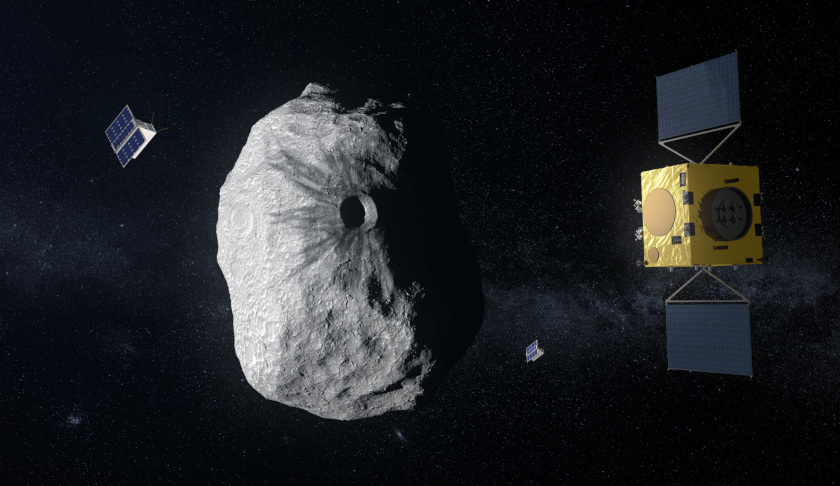For decades, the European Space Agency and JAXA have worked in close collaboration to better understand the universe.
From Earth observation missions to spacecraft exploring Martian moons, Mercury or distant asteroids, ESA and JAXA continue to show how international co-operation makes space exploration more effective and ultimately more successful.
On his first visit to ESA mission control, Yamakawa delivered a presentation highlighting 40 years of co-operation between ESA and JAXA, most recently illustrated by the launch of BepiColombo, the joint ESA-JAXA mission currently en route to Mercury.
Rolf Densing, ESA’s director of operations, said, "We are thrilled to welcome president Yamakawa into the heart of Europe’s mission control centre. Our agencies have achieved a great deal together so far, and we are looking forward to many more shared adventures in future."
The European and Japanese space agencies also recognised the huge importance of space missions to deliver better understanding of our changing planet by gathering data crucial for Earth science and for tackling climate change.
The joint ESA-JAXA EarthCARE satellite will include four cutting-edge sensors, including the first Doppler radar in space, the Cloud Profiling Radar, provided by JAXA. As well as providing this critical instrument, JAXA will be responsible for a portion of the science data processing and distribution, ensuring the information can be used by scientists worldwide.
Similarly, ESA is distributing data from JAXA’s GOSAT-1 and -2 satellites across Europe, both providing critical new information on greenhouse gases in the atmosphere.
During the ESA Council meeting in Darmstadt, ESA director general Jan Wörner and Yamakawa signed an agreement on XRISM – the X-ray Imaging and Spectroscopy Mission – which will study extremely energetic phenomena in the universe.
XRISM will be launched in the early 2020s from the Tanegashima Space Center, Japan, with hardware components and support for science management and planning provided by ESA. In return, ESA will be granted observation time, to be allocated to scientists affiliated to institutions in ESA member states.
Wörner welcomed the continuing collaboration, saying, "While competition is undeniably a driver, co-operation can be a powerful enabler. In the co-operation with JAXA, the European Space Agency demonstrates its expertise in international partnership."
On the ground, ESA and JAXA are planning a feasibility study for a much-needed new antenna, which would increase capacity to communicate with future missions.
Deep-space communication is vital to the success of all missions. ESA ground stations supported JAXA’s Hayabusa-2 spacecraft, which arrived at asteroid Ryugu last year.
The two agency leaders also recognised the importance of space safety activities to protect people, the planet and global space infrastructure from hazards such as near-Earth asteroids, space weather and space debris, as well as cyber-security threats originating on Earth.
"Together, we travel further, explore deeper and understand the universe and ourselves better," said Wörner.

